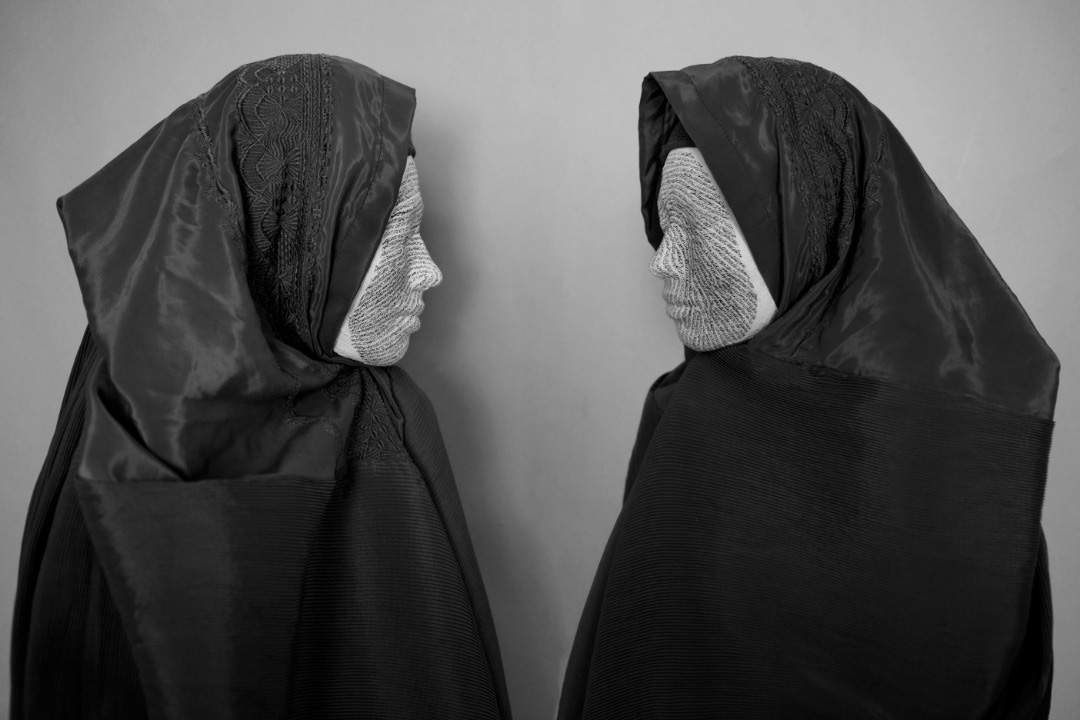On the occasion of the World Day for the Elimination of Violence against Women (Nov. 25), the Imago Mundi Foundation in Treviso opens the exhibition Qatra Qatra / Drop by Drop. Visions from Afghanistan (running from Nov. 25, 2021 to Jan. 9, 2022), set up at Gallerie delle Prigioni, with the aim of opening a timely reflection on the complex history ofAfghanistan, with a focus on women, their strength and courage. Curated by Afghan conceptual artist and researcher Amanullah Mojadidi, the exhibition features four Afghan women artists, emancipation activists who have made fighting discrimination and critiquing social and religious norms the hallmark of their artistic practice.
One of them, Kubra Khademi, an illustrator, performer, and activist, will be present on the opening day and will perform in the performance Female Crimes: Inspired by the environments of the Prison Galleries and their former function as a prison, Kubra has created for this exhibition more than 40 drawings installed behind the peepholes of the cell doors (visitors, opening the peepholes, will see represented in the drawings some seemingly harmless actions, which become, for a traditionalist and ultra-conservative mentality, crimes if performed by a woman. Waiting for visitors, behind a peephole, will be Kubra herself, in the pose of the kings of ancient Persian fairy tales. In this way, she will reinterpret the concept of power: in her reinterpretation, in fact, to exercise power is no longer the king of the fairy tales, but the female element, capable of fascinating the male one and, for this reason, according to a certain tradition, to be feared and condemned. In her performance, Kubra will therefore impersonate a djinn, a figure somewhere between a witch and an evil imp, recurring in Islamic folklore.
In addition to Kubra Khademi, works by Lida Abdul, a video artist, are featured in the exhibition, with the short films White House (white, with which everything is painted, symbolizes the erasure of the past and the impossibility of reconstructing what has been lost) and In Transit (the carcass of a Soviet warplane becomes in the play of some children a fantastic fallen bird); by Hangama Amiri, who draws instead on the weaving tradition, reinterpreting it in a contemporary key (her tapestries Mariam Beauty Salon and Journalist speak of women defying traditionalism, exposing their beauty instead of hiding it, and working in society instead of remaining silent); With Invisible Captivity, Rada Akbar presents portraits of women in black and white; fingerprints are imprinted on their faces, symbolizing how in the conservative patriarchal mentality of the regime, women are considered property, and therefore ideally branded by those who claim ownership. These artists are joined by Mexican videomaker Mario García Torres, who has elected Afghanistan as the land of his artistic research. With his film Tea, Torres takes us on a nostalgic reflection in 1970s Kabul, to visit the famous One Hotel, home, studio and hotel opened by Alighiero Boetti at that time, when the city was a stop on the itinerary between East and West traveled by hippies.
Exhibited alongside these works will be Untitled, Imago Mundi’s collection dedicated to Afghanistan, with 140 works in 10x12cm format, created by artists living both in the country and abroad. In addition, Fondazione Imago Mundi is continuing its commitment to artistic research related to Afghanistan: it is currently working on the Stories from the Camp collection, which will gather works by refugee artists around the world who live or have lived in refugee camps. A special section will be dedicated specifically to Afghanistan.
“The events of August 2021,” writes curator Amanullah Mojadidi, “left many in Afghanistan and abroad with the same question: how could this happen? An ominous atmosphere has descended upon Afghanistan, with incidents of attacks on artists by the Taliban and the initiation of campaigns to replace colorful murals with black-and-white religious verses (culture is often employed as a battleground). It has become difficult for artists remaining in the country to believe in the ancient proverb’s promise of hope; instead, fear has replaced hope, worry has replaced patience, and uncertainty has replaced determination. What has happened so far has triggered a series of reactions, from the evacuation of artists to the freezing of international funds, which has thrown the country into an even more precarious condition. This exhibition, rather than responding to these recent events, aims to be a timely reflection on Afghanistan’s rich and complex history, a history that has not ended but is still being told, and that includes a past, a present and a future.”
The exhibition aims to emphasize how Afghanistan will have to be rebuilt, drop by drop, step by step. But while recovering what is lost is impossible, it is also imperative to move forward and continue to tell the story of the beauty and expose the contradictions and concerns of Afghanistan today. A schedule of meetings with journalists, artists, curators, researchers, and film screenings, from Nov. 24 to Dec. 14, will delve into the exhibition’s themes: the condition of women in the Afghanistan of the new regime, the diaspora of artists and cultural workers, freedom of the press with a focus on photojournalism, and the protection of cultural heritage. Appointments will be in-person or online; the full list is available on the Imago Mundi website.
Image: Rada Akbar, Invisible Captivity
 |
| Treviso, an exhibition on women of Afghanistan with works by four Afghan women artists |
Warning: the translation into English of the original Italian article was created using automatic tools. We undertake to review all articles, but we do not guarantee the total absence of inaccuracies in the translation due to the program. You can find the original by clicking on the ITA button. If you find any mistake,please contact us.